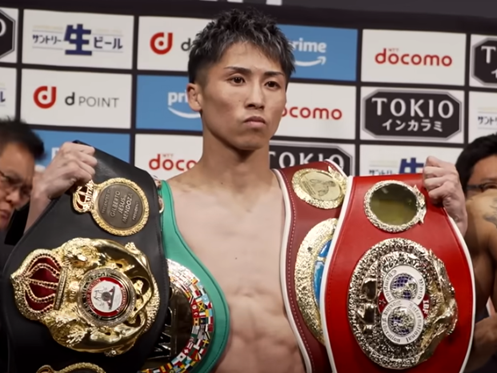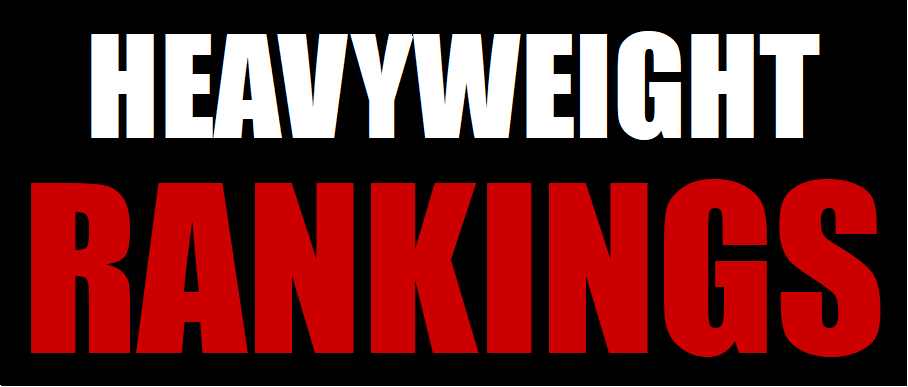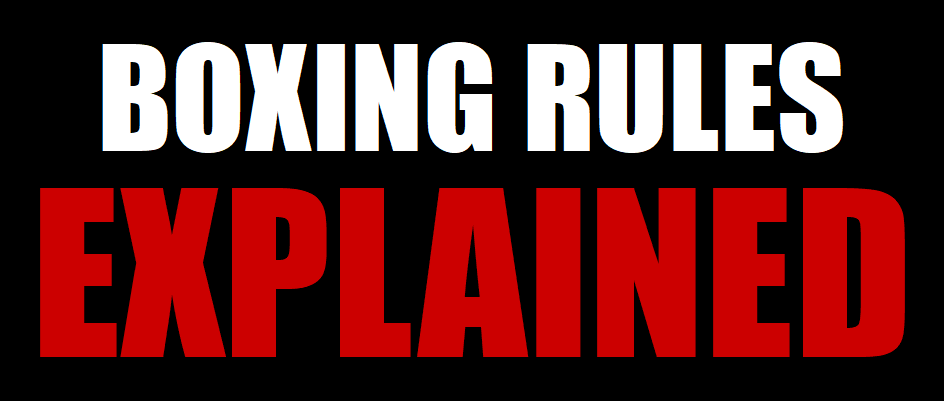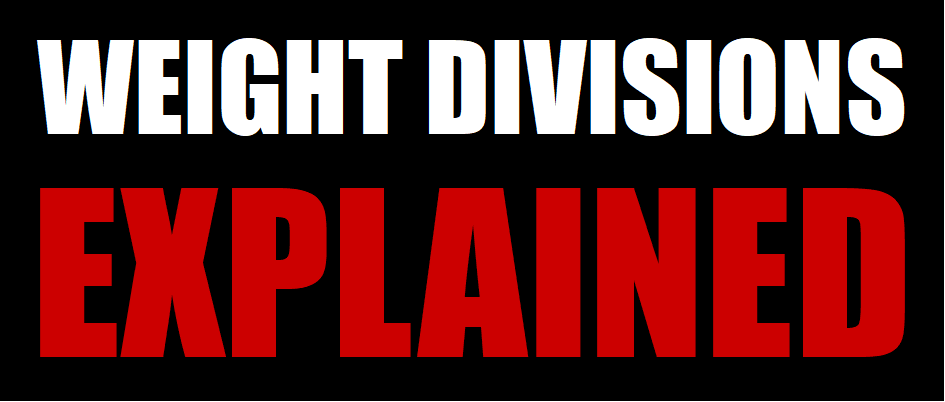A complete boxing words, terms & phrases glossary featuring every piece of lingo – here covering S, T and U. Just part of our huge Boxing FAQ.
Select a glossary section from below:
Words & Terms: S

Sanctioning Body
Organizations that sponsor and sanction championship bouts, and also award title belts to victors. There are many in existence, with the WBC, WBA, WBO, IBF and RING deemed the most ‘legitimate’ at world level.
Sanctioning bodies charge champions fees for capturing and defending titles, something which no doubt led to the creation of several modern era variations (Interim, Regular, Super, etc). This has led to much controversy, and is to blame for diluted championship landscapes and general confusion.
For a simple breakdown, see our Boxing Champions & Belts Explained Guide.
Sanctioning Fees
Fees that a sanctioning body, such as the WBC, charges boxers who fight for or defend one of their world title belts.
Saved by the Bell
A boxer who, seemingly about to get knocked out, survives the round due to it ending. Tyson Fury managed to survive a torrid 9th round against Oleksandr Usyk courtesy of the bell ringing.
Scar Tissue
Deep cuts, usually around the eyes, will develop scar tissue during the healing process. While a boxer may appear visibly clear of damage in his next bout, he will be more susceptible to cuts. Boxers with a long history of battles in the ring often cut easily, especially if they have received stitches on a number of wounds.
Scoring Criteria
Criteria used by judges to score a fight. For example, bouts are scored in the professional ranks based on effective aggression, ring generalship and clean shots. Different states and countries have slightly varying criteria, but typically consider the above when scoring a bout.
Scoring Hit
In either Amateur or Professional boxing, a scoring hit is generally one that lands cleanly on an opponent. In an Amateur contest, the punch must make contact with the head to score.
Script
Often referred to as the ‘pre-fight script’. In other words, how the fight is predicted to play out according to popular opinion and oddsmakers. For instance, heavy underdog George Kambosos wasn’t scripted to beat Teofimo Lopez.
Seconds (corner)
Refers to a boxer’s corner team, such as the head-trainer and cutman who offer guidance and assistance between rounds.
Seconds Out
Ringside Timekeepers call “seconds out”, generally 10 seconds before the boxers’ rest period (of 60 seconds) ends. When this is called, the boxers’ chief seconds should exit the ring so the fight can resume.
Sitting Down on One’s Punches
The process of creating increased punch power by planting one’s feet. In other words, standing one’s ground and throwing with venom – as opposed to being fleet-footed. It is often said that Amateurs transitioning to the pro ranks don’t ‘sit down on their punches’ as they are used to fighting in a mobile, elusive style.
Shadow Boxing
A solitary training exercise that involves practicing punches and footwork while visualizing an opponent. Shadow boxing is a time-honored training method, and is still considered a crucial component of fight preparation.
Shade
A boxer may be ‘shading’ his opponent, meaning he is winning the bout, but only by a narrow margin.
Shop-Worn (fighter)
Describes a fighter who no longer performs at a high level, either due to increased age, attrition, or injury. In other words, they may be partly or completely washed-up. Ex-champions and veterans considered ‘shop-worn’ often face an uphill struggle when returning to the ring.
Short-Straight (punch)
Usually a counterpunch landed on an attacking opponent. Juan Manuel Marquez knocked out Manny Pacquiao with this particular shot in their fourth fight.
Shoulder Guard
A defense-orientated guard whereby a boxer raises his lead shoulder slightly, with his chin tucked in behind it.
Shoulder Roll
A defensive maneuver whereby a boxer rotates to the side and raises his lead shoulder, causing the attacker’s punch to miss the head (and at worst hit the shoulder). Masters of the shoulder roll, such as Floyd Mayweather, are extremely difficult to hit cleanly.
Slip (ruling)
When a boxer falls to the canvas as the result of slipping or tripping – not from a knockdown. In these cases, the referee will rule a ‘slip’ and won’t read a 10-count.
Slippery
A term used for a boxer who is elusive and hard to hit with a clean punch. Slippery boxers, such as the great Pernell Whitaker, are usually defensive-minded and can also be unorthodox in style.
Slipping (defense)
Using lateral movement, a boxer can evade punches by leaning left and right to ‘slip’ them. Slipping punches can create counter-punching opportunities, and also allow shorter boxers to ‘slip inside’ and find their range up-close.
Slugger
Often considered the least technically refined of boxers, a ‘slugger’ typically favors aggression, power and pressure over finesse. Due to their all-action style, sluggers often feature in fan-friendly bouts. Rocky Marciano is considered a legendary Heavyweight slugger.
Smelling Salts
Or Spirit of Hartshorn, Sal Volatile. A chemical compound (usually ammonium carbonate) used to help restore a boxer’s failing consciousness. A chief second holds the salts under his dazed boxer’s nose to ‘reawaken’ him following a punishing round.
Using smelling salts in many states and countries has been illegal for several decades. Some boxing commissions have argued that, if used, it can delay or inhibit neurological assessment, especially following a concussion where hospitalization may be advisable.
Snoozefest
A bout considered to be disappointingly dull. This could be for a variety of reasons, such as the boxers being reluctant to engage and force any action.
Solar Plexus
The abdominal area situated at the peak of the ribcage. A boxer may target this area as it can be a devastating punch to recover from.
Southpaw (stance)
A fighting stance where the right foot leads, and often the preference of left-handed boxers. Many orthodox (right-handed) boxers will typically have far less experience against southpaws, and therefore find them awkward to face.
Sparring
Boxing conducted within training camps to simulate an upcoming fight. Headgear and 14-16oz gloves are worn, with the sparring itself usually focusing on tactics and technique, rather than full-power combat. Sparring partners may be asked to replicate a boxer’s scheduled opponent in order to better prepare them.
Speed Bag
A small, round hanging bag which is repeatedly struck to build a boxer’s coordination, timing and rhythm.
Split Decision (SD)
A Split Decision favors one boxer. For example, two judges score a contest for Boxer A, while the other scores it for Boxer B. For more info on scoring and fight outcomes, see our Boxing Results Explained Guide.
Split Draw (SD)
Essentially a Draw. A Split Draw is reached when one judge scores the bout even, one for Boxer A, and the other Boxer B.
Spoiling
A boxer may ‘spoil the work’ of his opponent. For instance, after getting outboxed for a few rounds, he chooses to rough up and clinch his opponent in hopes of breaking his rhythm.
Squared Circle
Simply another term for a boxing ring.
Stable
Refers to a group of boxers who train in the same gym, under the same trainer, or are promoted by the same company. To maximize profits, promoters often stage fights featuring their own stable of boxers.
Stance
The manner in which a boxer stands. Orthodox boxers stand with their left foot forward and jab with the left hand, while southpaws have their right foot forward and jab with the right.
Standing Count/Standing 8-Count
When an 8-count is given to a hurt boxer not yet knocked down to the canvas. While common in Amateur bouts, referees seldom give standing 8-counts in professional boxing.
Stare-Down
Or face off; the moment at weigh-ins where boxers come face-to-face with one another, with press and photographers present. It may also refer to the moment shortly before boxer’s touch gloves at the start of a fight.
Stare-downs can be intense, with pushing and trash-talking, particularly at weigh-ins, taking place. Boxers may look for fear in their competitor’s eyes, and try to gain a psychological edge through intimidation. Theatricality can often be expected from showmen such as Tyson Fury, which often grabs headlines.
Stay-Busy Fight
A less significant fight that acts as a gap-filler while waiting for a bigger opportunity to materialize. For example, if a champion is unable to finalize negotiations with a top contender, he may choose to fight a lesser-known (usually dubbed ‘fringe contender’) in a ‘stay-busy’ fight to avoid inactivity.
Stick and Move
A fighting strategy that sees a boxer punching and then immediately moving out of range. The idea is to enter and exit ‘the pocket’ quickly, being offensive yet elusive. Muhammad Ali circled many of his opponents in this manner, dancing while picking them off with jabs.
Strawweight
Or Minimumweight; a boxing weight class carrying a limit of 105 lbs/48kg.
Straight Punches
Anything that isn’t a hook or uppercut. The jab and cross are straight punches in boxing.
Strength and Conditioning (trainer)
Strength and conditioning trainers are employed by boxers to help fine-tune strengths and overall performance in the ring. For example, Manny Pacquiao benefitted from Alex Ariza, who engineered a tailored program to further increase Pacquiao’s explosive speed and power.
Sucker Punch
A punch thrown at an unsuspecting opponent. A ‘well-schooled’ boxer may choose to punch an opponent when, for example, they touch gloves at the beginning of a fight, or following a foul. Floyd Mayweather delivered one of the sport’s most infamous sucker punches in 2011 against Victor Ortiz.
Sunday Punch
A powerful shot, generally one that wobbles an opponent or produces a knockout.
Super Bantamweight
Also known as Junior Featherweight, Light Featherweight. A boxing weight division with a limit of 122 lbs/55kg.
Super Featherweight
Also known as Junior Lightweight; a weight class with a maximum limit of 130 lbs/59kg. For more info on the sport’s 17 different classes, see our simple Boxing Weights Explained Guide.
Super Flyweight
Or Light Flyweight, Junior Bantamweight. A weight division with a limit of 115 lbs/52kg.
Super Lightweight
Or Light Welterweight, Junior Welterweight. A weight class with a limit of 140 lbs/64kg on the scales.
Super Middleweight
A boxing weight division with a maximum limit of 168 lbs/76kg on the scales.
Sweet Science
Refers to the sport of boxing itself, a name coined by boxing writer Pierce Egan.
Switch-Hitter
A boxer capable of competently boxing in both the orthodox and southpaw stance. Terence Crawford is renowned for his switch-hitting prowess which offers many tactical benefits inside the ring.
Words & Terms: T
Take a Dive
When a boxer fakes being knocked out in order to throw a fight. It’s likely that he had an illicit financial agreement beforehand or had placed a bet on himself to lose. Moreover, he may have been blackmailed/threatened. While match-fixing is of course illegal, it is very difficult to prove in boxing, the sport considered the easiest to fix.
Taking a Knee (strategy)
A boxer may take a knee to recover from a heavy blow, or tactically to buy time, since the knockdown affords them another 10 seconds. For example, a hurt boxer may choose to take a knee in the closing moments of a round to avoid getting knocked out.
Timothy Bradley wisely chose to take a knee against Ruslan Provodnikov with seconds to spare in the final round. This decision likely staved off a knockout loss, allowing him to seize a decision victory.
Tale of the Tape
Usually the key physical statistics of two boxers, such as their reach, height and age. It can also include other tangible facts, such as their stance, recent form, and fight night (rehydration) weights. TV/streaming networks often display a tale of the tape before each broadcasted fight commences.
Technical Draw (TD)
A verdict generally reached when a fight ends after the 4th round due to an accidental head clash, at which point the scorecards read even.
Technical Decision (TD)
A decision reached due to circumstances, such as an accidental head clash, that have forced the referee to halt a contest. You can find out more about the rules regarding a Technical Decision in our Boxing Results Explained Guide.
Technical Knockout (TKO)
Not to be confused with a regular Knockout (KO), a Technical Knockout is reached when a referee mercifully intervenes to save a boxer from unnecessary further punishment. For more info on KO variations, see our Boxing Rules and Results Explained Guides.
Technician
A boxer who demonstrates refined technique, notably in the areas of offense, defense, timing, balance and footwork. Boxers like Oleksandr Usyk, Terence Crawford, Vasyl Lomachenko and Naoya Inoue are revered for their elite craft inside the ring.
Third Man in the Ring
The referee in charge of the action.
Three-Knockdown Rule
Some fights carry a 3-knockdown rule, meaning that if a boxer suffers three knockdowns in a single round, the referee must stop the contest. The rule is seldom used nowadays, however, with most bouts stopped at the referee’s discretion.
Throw in the Towel
A concerned trainer may throw a white towel into the ring to prompt the referee to stop a fight. In other words, the trainer believes his boxer is taking too much punishment. While referees almost always honor these requests, they are not obligated to do so.
Timekeeper
A ringside official responsible for time management over the course of a fight. This includes rounds and rest periods, with a bell rung to signal the start and close of these segments. He may also time 10-counts issued following a knockdown, and record the exact time a bout ends inside the distance.
Title Bout
Or Championship bout. Simply refers to a fight whereby a world or national title is at stake. For example, the RING world title, or European title.
Titlist
Or Champion. A boxer who holds a title, whether it be of the domestic, European, or world variety.
Toe-to-Toe
A heated exchange where both boxers may quite literally be ‘toe-to-toe’. Both boxers are likely throwing big shots, looking to land a knockout blow. Manny Pacquiao and Juan Manuel Marquez often fought toe-to-toe during their furiously fought encounters.
Tomato Can
Or bum, journeyman; refers to a very limited boxer who would seemingly need a miracle to win. A boxer such as this is usually matched with young prospects to make them look good and build their confidence. ‘Tomato cans’ typically last no longer than a few rounds, and are often beaten by knockout.
Trading
Refers to an exchange of punches thrown between boxers, usually consisting of several. A journalist may record that: “Despite a slow start, John Smith is now obliging to trade leather with the champion.”
Trainer
While there are various types of trainers, a boxer usually has a head-trainer and assistant-trainer during fight camps. Higher profile boxers may also be able to afford a strength and conditioning specialist. Famous boxing trainers include the likes of Cus D’Amato, Emanuel Steward and Freddie Roach.
Trash Talk
The colorful language some boxers speak during the build-up to a fight, often in press conferences and interviews. It has long been considered ‘verbal warfare’ and a means of gaining a psychological edge. Muhammad Ali is perhaps the first serious trash-talker, belittling his opponent’s ability and appearance, even through poetry.
Trial Horse
Or Gatekeeper. A capable, durable boxer who will nonetheless likely always remain a contender. They are usually matched with young prospects to gauge their ability and potential.
Tune-Up
A mainstream boxer who lost or struggled in his last fight, may choose to take a ‘tune-up’. For instance, a marquee boxer looking to regain their confidence following a knockout defeat, may look to fight a fringe-contender (a capable yet limited boxer) in their next bout.
Turnbuckle
The corner post of a ring, with padding inside to help prevent boxers injuring their backs.
Words & Terms: U
Unanimous Decision (UD)
A Unanimous Decision is reached after the final bell when all three judges score the contest for the same boxer.
Undercard
The fights taking place prior to the night’s final bout, the main event.
Underdog
Any boxer not expected to win a contest is considered an underdog. Boxing, like any other sport, is full of underdogs, some of which continue to spring mighty upsets.
Undisputed (Champion)
A boxer who has captured all the major titles in his weight division. For example, Canelo Alvarez became the undisputed Super Middleweight champion after unifying the WBC, WBA, WBO and IBF belts in 2021. See boxing’s current Top 10 Rankings & Champions here.
Unification (bout)
A bout where two or more world titles are on the line. For instance, Boxer A may hold the WBC title, and Boxer B the WBO. The winner would take home both belts.
Uppercut
A shot thrown upward to the underside of an opponent’s jaw. Increased power is generated if the punch begins in the knees.
Upset
When a heavy underdog beats a heavy favorite, it is considered an ‘upset’. In other words, a very unexpected result. While boxing’s A-side boxers tend to be victorious, upsets do happen. Andy Ruiz Jr knocking out Anthony Joshua, for example, was considered a huge upset by most observers.
Upstart
Or prospect; a young, talented boxer said to have great potential and a bright future ahead of them in the sport.
USA Boxing
The official governing body of Amateur boxing in the US.
Select a glossary section from below:
Return to Boxing FAQ?








